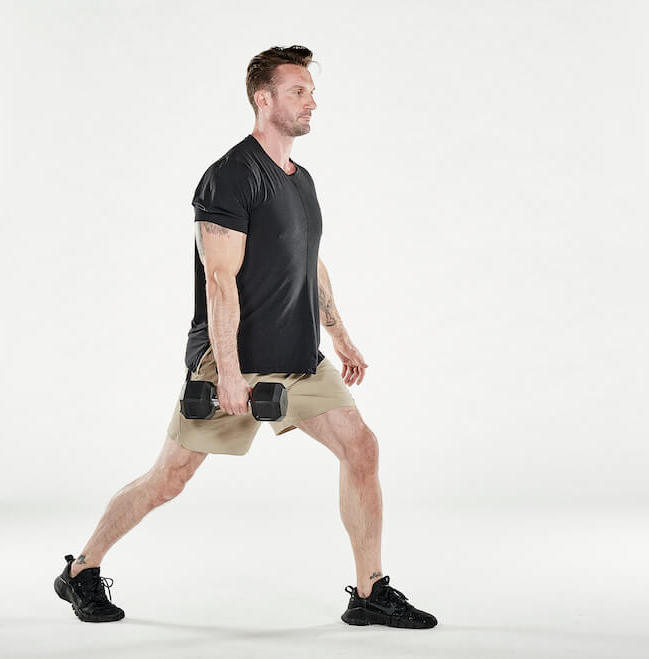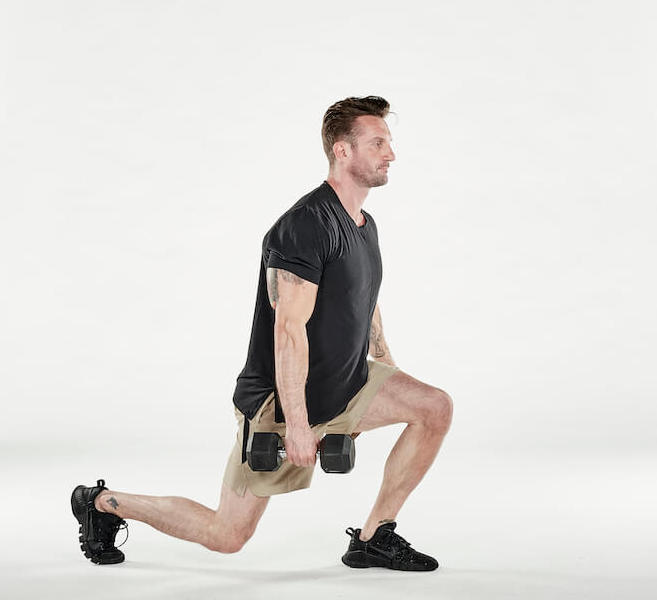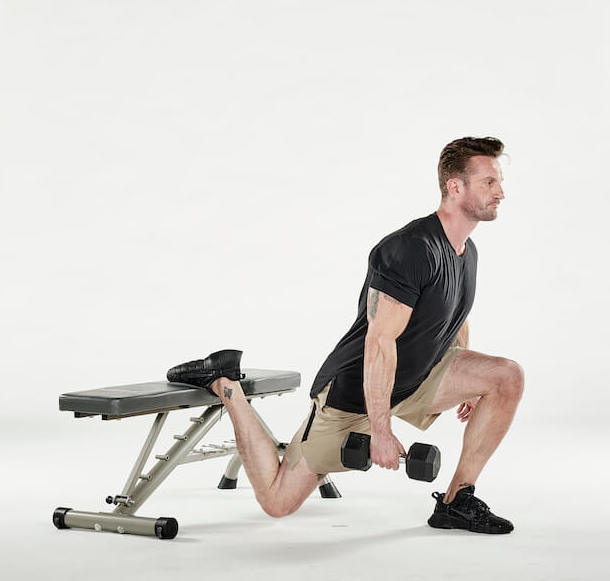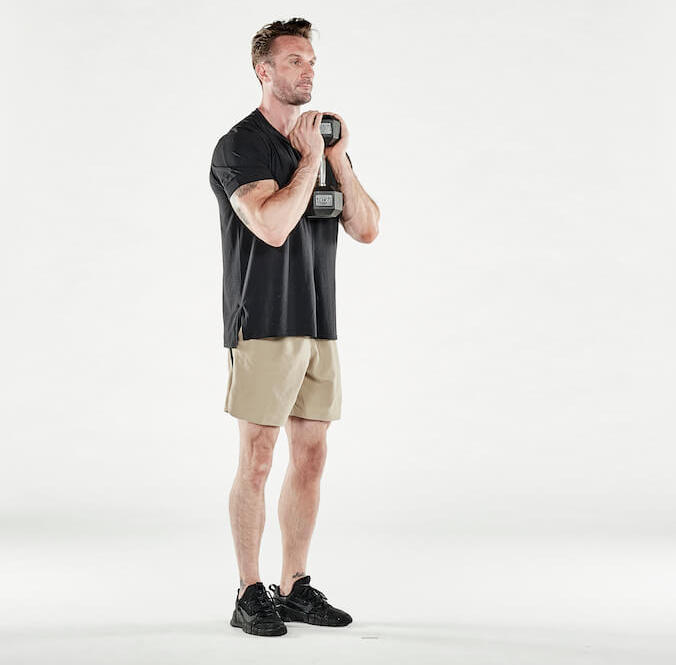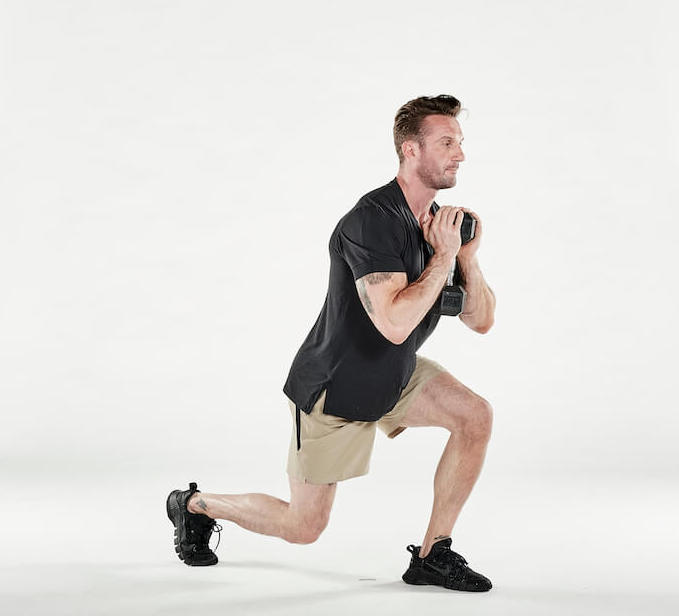Mike Chadwick is the former paratrooper turned tactical military fitness coach, who revolutionised training in the British Armed Forces to deliver unprecedented pass rates for soldiers.
Here he reveals the secrets to that success – and how his approach can benefit your own training.
Jumping out of a plane is quite literally a leap of faith. It requires overriding every logical instinct in your body – while putting your complete trust in a thin nylon canopy that should, in theory, unfold above you and glide you down to safety.
“This is the part where most normal people will stop to think,” explains Coach Mike Chadwick. “But when you’re a paratrooper there’s no time for hesitation. You’re in a line of soldiers, clipped onto a static line, all waiting to follow you out of that door.
“On the other side of the plane, there’s another line of guys who are also jumping out. Any delay or mistiming could put you and others at risk. So, when your superior shouts and taps you on the shoulder to go, you have no other option…”
During a 13-year career in the British Army, Chadwick made hundreds of these jumps without even thinking about it. As a professional soldier this was just part of his day-to-day routine. In fact, it was only after leaving the plane that the real work would start.
He would have to steer away from his colleagues in the air, deploy his kit and land safely. Then when his feet touched the ground, his real work as a soldier would start and he would have to follow out the mission plan.
“It’s funny, most people think the scary part of being a paratrooper is the jump. But in fact, leaving the plane is normally a blessing,” he explains. “When you’re carrying a load of super heavy kit, you actually can’t wait to be weightless for a bit.
“Landing is much more worrying because you never know what to expect. But thanks to the rigorous training you’re more than ready to deal with whatever that comes your way.”
Since leaving the forces, coach Chadwick has brought this system with him and has since been successfully sharing it with professionals from a wide range of spheres. He already counts UFC fighters, Special Forces Commandos, anti-poaching guards and CEOs among his wide roster of clients.
Now, with the release of his new book The Red On Revolution, he is eager to reach an even larger audience…
Tactical athlete training rule #1: Prepare, prepare and prepare some more
Red On is the light that paratroopers see when they are in the transport plane. It tells them the doors are open and they are on standby to jump.
“If a paratrooper isn’t ready at Red On,” says Chadwick, “they won’t be ready to execute the words of command when they come through. Being ready to go is the basis of all success. Otherwise, you’ll find yourself playing catch-up from the beginning.”
For Chadwick, the building blocks of this preparedness is peak physical conditioning. He pushes his athletes to be in the best possible condition they can be in. Not simply for the task at hand, but also for any other things that can come their way.
The basis of his physicality is core strength and resilience. Not only does this massively impact performance but it also improves things on a mental side.
“If you’re in the best shape you can possibly be in then you reduce pressure on your mental strength,” he says.
“Imagine a marathon: if you are well prepared then you only have to dig deep for that final extra 10%. Whereas, if you are slightly lacking and start to struggle to keep pace at the beginning then you will need to draw down on that mental fortitude from the beginning to get through things.”
In Chadwick’s opinion, preserving that mental side of things for when you really need it will be the difference between winning and losing. It’s also part of his pathway to success, built on the idea that you need to be physically ready for anything.
“It’s what I call the ‘tactical athlete’,” he explains. “Guys I train aren’t simply specialists in their field. They’re all-round athletes with the additional bonus of having a particular expertise.
“In the battlefield you never know what to expect. So, you need to be ready to react to every eventuality. So, by training civilian athletes in a similar way, I’m giving them an edge over their competition.”
Tactical athlete training rule #2: Success is based on desire
While Chadwick’s methods are deeply rooted within the military world, spending time as a recruit, soldier and military trainer has also given him a unique opportunity to observe and then correct several flaws in these systems.
In particular, the high level of failure when it came to passing tests at all levels of competency captivated his attention.
“Most military physical tests are there to select the best and wean out the undesirables,” he explains. “But the more I became familiar with them, the more I became convinced most people could pass them if they had the right coaching.
“The course I was the most familiar with, paratrooper training (also known as depot), is notorious for being difficult, but even then I was seeing reoccurring patterns to why people weren’t going the full distance.”
Rapidly, Chadwick realised that the mental side was a building block to success and that those who really wanted it badly enough would end up being the one’s who succeeded.
It didn’t matter how big, strong and fit you might appear on day one, those who lasted remained focused on their targets.
“The reason why most people fail is because they give up what they want most for what they want right now,” he says.
“This way of thinking works in a race, a training programme or even life ambitions. Think about a race. At the beginning you want to win and that’s what you want most but halfway through when your lungs are burning and your legs are tired, all you are thinking about is how much you want to stop.
“If you let that become your main priority rather than winning the race, that’s what will happen.”
Coach Chadwick now has a selection process before he will work with people. He wants people he works with to be 100% focused on their goals. At the end of the day, he doesn’t believe people should be trying to do something if their heart isn’t really in it, and it’s not the coach’s job to force people to do things they simply don’t want to do.
“It was the same for paratrooper selection,” he adds. “We had a long list of recruits waiting to fill people’s boots, so if people didn’t want it enough, we simply said to them they could give up.
“There is often a misconception in the Army that Sergeants spend their time yelling at recruits, but for me raising my voice is always a last resort. Once you yell you have lost control.
“So, before that you simply need to tell people they can drop it all whenever they want and you’re not going to waste your time. If they’re winners, it will spur them into action.”
Tactical athlete training rule #3: Accept your strengths and weaknesses
Another core issue Chadwick noticed with paratrooper training was a one-size fits all approach to physical training and fitness.
“When I became a Royal Army Physical Training Corps Instructor I started working with younger recruits, where there was a high degree of failure,” he remembers.
“After working with them for a few weeks it soon became obvious they were all at very different stages of physical development. Some 16-year-olds looked more like they were 13-year-old boys and others looked like 30-year-old men.
“It was clear that with such different body shapes and strengths, these lads couldn’t handle the same training regimens, so I immediately started giving them individualised training plans they could handle.”
Not only did that enable the younger recruits to develop properly, but it boosted success rates within this age category. There was also a knock-on effect that these young men were staying injury free for longer and going on to achieve higher successes further down the line.
Soon it got Chadwick thinking this approach could work with different ages groups, too.
“Everyone has their own quirks, weaknesses and injuries,” he says, “so never trust these Instagram trainers who show you one move to solve it all.
“The key to my athletes’ success is that I always prescribe them the right exercises, not just the fashionable ones. And if they can’t do the reps, the prescription is wrong – not the other way around.”
Tactical athlete training rule #4: Adapt and overcome
With older athletes, finding time to train is often an issue Chadwick comes up against. It’s obvious that if everyone could be at the gym for an hour every day at 10am they could quickly achieve peak conditioning. But in the real world that’s not always a possibility.
Work, family duties and other responsibilities all come into play. So it’s essential to understand your limitations and work around that to make the most of your training time.
“In the Army, I often found senior officers struggled to manage their diaries and train for physical tests,” he says. “This level of other responsibilities wasn’t going to disappear. So in order to get them ready I simply used some common sense and problem solving.
“We would schedule gym time around them; find adequate equipment so they could work out in their offices; and even develop training drills that could be done in short, sharp bursts during breaks in their working day.”
For Chadwick, results speak for themselves. Thanks to a mix of mental fortitude, physical preparation, and common sense, he says he has found a recipe for success.
“I am convinced anyone can become a tactical athlete if they want it enough,” he says. “I don’t care if you’re a soldier looking to pass an elite Special Forces test, a top-level sportsperson looking for gold, or just a regular Joe with a wild dream.
“All you need is to be ready to take that jump.”
3 exercises for building lower-body strength and core stability
“Loaded marching is the basis of paratrooping fitness,” says Chadwick. “It requires robustness, resilience and endurance. Wherever the battlefield, whatever the country, you will always need to march with full kit. So, single-leg exercises are essential for staying injury-free.”
Need a pair of dumbbells? Click here for our pick of the best dumbbells for home workouts
Split Squat
- From a standing position, take a long step forward as if performing a lunge. The heel of your back foot should be raised.
- Keeping your torso straight, lower slowly until your back knee almost touches the floor, then push back up.
- Keep your knees in line with your toes, especially on the front leg. Don’t let the front knee stray past your foot as you lower.
- Complete all your reps on one leg, then switch to the other.
Bulgarian Split Squat
- Find yourself a step or bench that you can rest a foot on – it needs to be about knee-height.
- Get into a forward lunge position with torso upright, core braced and hips square to your body. Keep your back foot elevated on the bench.
- Your leading leg should be half a metre or so in front of bench.
- Lower until your front thigh is almost horizontal, keeping your knee in line with your foot.
- Drive up through your front heel back to the starting position, again keeping your movements measured.
Lunge
- Start in a standing position with your feet hip-width apart.
- Step forward, longer than a walking stride, so one leg is ahead of your torso and the other is behind.
- Your foot should land flat and remain flat while it’s on the ground. Your rear heel will rise off the ground.
- Bend your knees to approximately 90 degrees as you lower yourself. Remember to keep your trunk upright and core strong.
- Then, forcefully push off from your front leg to return to the starting position.
Words: John Silcox


